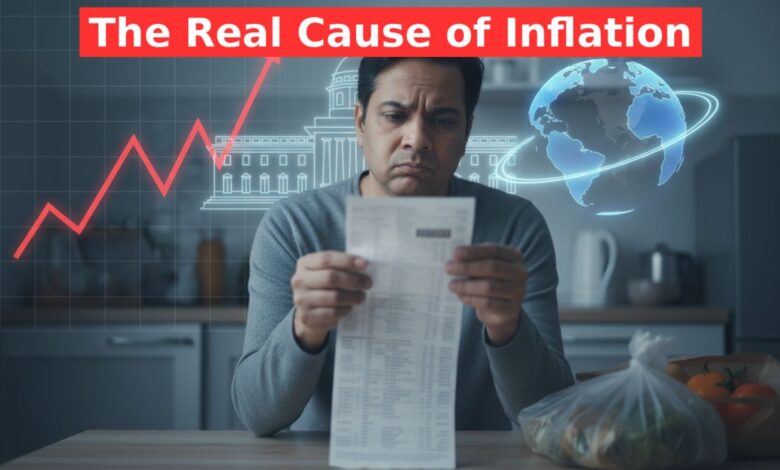Imported Inflation: Why are RBI & Modi Govt Failing to Control Inflation Even After Raising Interest Rates?

Imported Inflation: The common person experiences inflation when everyday items, like groceries and fuel, become more expensive. The natural expectation is that the government or the Reserve Bank of India (RBI) will take steps to control this price rise. Fundamentally, inflation is driven by demand and supply; prices rise if demand increases or if supply decreases.
However, in the 2023-24 financial year, the standard policy measures taken by the RBI proved ineffective. The RBI’s Monetary Policy Committee, which aims to keep inflation between 2% and 6%, failed to meet this target for three consecutive quarters. The reason for this failure is a significant shift in the nature of inflation. It is no longer driven purely by domestic factors but is increasingly “imported”. Standard tools, like raising interest rates to curb demand, are proving ineffective against this new type of inflation.
The Challenge of Imported Inflation
India’s economy has become significantly more integrated with the global economy. The “trade to GDP” ratio, a measure of this integration, has surged from about 13% in 1988 to a substantial 45% by 2022-23. This means external pressures now have a much larger impact on domestic consumers in India.
This “imported inflation” stems from several sources:
Get Instant News Updates!
Join on Telegram- Edible Oils: India imports over half of its cooking oil. If a major supplier like Indonesia restricts its exports, the RBI raising interest rates in India will not solve the resulting food price inflation. In fact, it could harm other sectors of the economy by making borrowing more expensive.
- Crude Oil: Dependency on imported crude oil is growing year on year. Its price affects numerous industries beyond just transportation, creating a widespread ripple effect.
- Global Events: The Russia-Ukraine war disrupted the global supply of essential grains and fertilizers. This directly impacts India’s agricultural system, which is dependent on fertilizers, leading to higher food prices. Similarly, crises like the one in the Suez Canal increase freight and transportation costs, which are eventually passed on to consumers as higher import costs.
A Proposed Solution: Trade Exposure Inflation Index
To tackle this modern challenge, a new measure is proposed: the Trade Exposure Inflation Index. This index would help measure inflation coming specifically from imports by tracking three key components:
- Direct Imports: The impact of price changes on finished goods that are imported directly, such as edible oil, mobile phones, or fertilizers.
- Intermediate Goods: The effect of price changes on imported raw materials used in domestic production, like Active Pharmaceutical Ingredients (APIs) for medicine or semiconductors for electronics.
- Exchange Rate Pass-Through: How a depreciating currency (a weaker rupee) makes all imports more expensive.
Adopting such an index would provide transparency, allowing policymakers and the public to understand whether inflation is due to domestic factors or external (imported) ones. If inflation is imported, the government can use fiscal tools like lowering import duties or using strategic reserves, instead of relying solely on raising interest rates. This prevents slowing down the economy unnecessarily when the root of the problem is external.
This article is for informational purposes only and does not constitute any form of investment advice.

